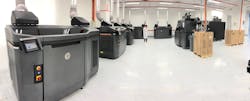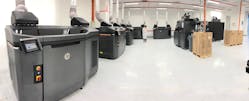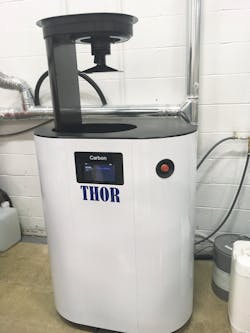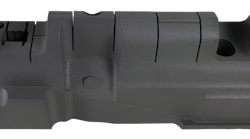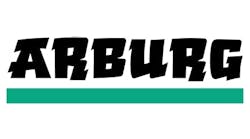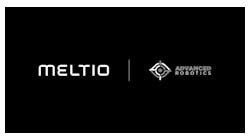Additive manufacturing can be a good fit for companies that want to automate their manufacturing environment, because 3-D printers can make parts unattended.
But true lights-out manufacturing — running a 3-D printing facility for extended periods without human intervention — can be a tall order. However, additive manufacturing companies serving a variety of end markets are embracing lights-dim manufacturing, which requires little operator involvement and is characterized by its flexibility.
JABIL
“Lights-out means zero labor. That’s not a realistic assumption,” said John Dulchinos, VP of digital manufacturing for Jabil, a $22 billion contract manufacturer and supplier of design and supply-chain services to 250 brands worldwide. The St. Petersburg, Fla., company has more than 100 facilities in 29 countries and 17,000“We have highly automated 3-D printing operations, but we have labor upfront preparing the digital file,” he said. “The actual printing is highly automated. There is some labor on the back end of the process for the finished quality of the part. Overall, we have highly automated factories with 3-D printing.”
Last year, Jabil opened a 3-D printing work cell with six 3-D printers in an existing factory it has in Singapore, Dulchinos said. It is printing parts for the medical and automotive industries, as well as parts used in printers, including 3-D printers.
“We produce them using HP MJF [Multi Jet Fusion] printers. The process from the design file to printing is fully automated. We are building several [parts] that go into the assembly,” Dulchinos said. “There is some manual labor cleaning and inspecting the printed parts, but it is very automated from design to printing.”
Jabil’s assembly operation is lights-dim, which eliminates some costs, such as inventory.
“A big advantage is the parts are going from the 3-D printers into the assembly process without going into inventory,” Dulchinos said. “Agility is about eliminating work in process and minimizing working capital. We eliminate inventory and work in process that comes with traditional manufacturing policies.”
In late 2018, Jabil also opened a 3-D printing work cell in Seattle with six selective-laser-sintering (SLS) printers making parts for the aerospace industry. The company also plans to make parts for the military at the site.
Dulchinos called the lights-dim manufacturing in Seattle and Singapore “the factory of the future.”
“The factory is important, but it’s also about the network,” he said. “Building a network that is very agile and producing products that are more connected to demand, where manufacturing is located nearer to customers.”
Jabil plans to celebrate the grand opening of another 3-D printing work-cell operation in Auburn Hills, Mich., this month. It will print parts for the automotive and medical industries.
“The process of going from CAD to a 3-D printer to out the door can be a largely automated process,” Dulchinos said. “You can create a physical product from a digital file. I’m not a big fan of lights-out manufacturing. That’s not a realistic goal. But the factory of the future is highly optimized with minimal people engagement.”
THE TECHNOLOGY HOUSE
The Technology House is a 3-D printing and injection molding company in Streetsboro, Ohio, with 16 3-D printers and 11 injection molding machines. It was founded in 1996 as an additive manufacturing plant and added injection molding machines in 2000. It has about 50 employees and prints parts for the medical, automotive, aerospace and industrial markets, as well as consumer goods.
Last year, the company made a big investment in Carbon CLIP 3-D printers and parts washers. It updated three of its Carbon CLIP printers from the M1 model to the M2 model, and leased an additional M2, giving it six Carbon 3-D printers. The company also leased a Carbon Smart Part Washer, which is an automated parts-cleaning system.
The Carbon CLIP 3-D printer is a digital- light-processing (DLP) machine that cures light-sensitive, PU materials.
The M2 3-D printer has a larger build platform and can build a part twice the size of parts built on the M1. The M2 printer build platform measures 7.4 inches by 4.6 inches by 12.8 inches.
“We added a second Carbon Smart Part Washer because we were able to cut 30 minutes of manual work with a 10-minute automated cycle in the parts washer,” Cebular said.
The 3-D printer has a removable build platform, which the operator carries to the parts washer and loads into the washer, which automatically cleans the parts according to operator input.
When done, the parts washer opens and a person removes the build platform, removes the parts with a putty knife, and may do some light sanding on the parts to remove any nubs. Then, the parts are cured in an oven for four to 12 hours, depending on the material used, while the plant runs lights-dim.
The Technology House is using Carbon 3-D printers for the surface finish of the printed parts.
The printers are on a pager system that notifies operators when it’s time to remove the finished parts.
“We have a tech on call. We start the production run, it runs for 24 hours, when it’s done printing, the 3-D printer texts the operator who comes in and unloads the parts,” Cebular said. “The printers are linked online so you can see when the run will be completed.”
Printer operators start at 5 or 6 a.m. and the last run ends at 7 or 8 p.m. When the team comes in the next morning, the employees can remove the parts and start the next cycle of production.
“Our goal is to have multiple shifts to run the machines around the clock,” he said. “Now we have one shift, and operators get paged to come in and remove the run and start a new one. A flexible work force is a must in the additive manufacturing world.”
RAPID APPLICATION GROUP
Rapid Application Group (RAG), a 3-D printing contract manufacturer in Broken Arrow, Okla., is dedicated to additive manufacturing and has operated lights-out for as long as 54 hours at a stretch.
Founded in 2017, the company has seven employees and focuses on making parts for the aerospace and defense industries, Founder and CEO Terry Hill said.
The company uses five 3-D plastic printers, most of which it acquired last year. It has two SLS machines — sPro 60 HD-HS units made by 3D Systems. It also has a Figure 4 Standalone machine made by 3D Systems that uses DLP. It has two Stratasys 3-D printers, a 450MC and a 400MC, which perform fused-deposition modeling (FDM). In addition, it has a 3-D printer that prints in wax.
“All six of our printers are used in lights-out or lights-dim manufacturing,” said Jason Tuttle, who works in engineering at RAG. “We get a 3-D file from the customer and process that through our software. We send it to the 3-D printer and start the printing process.”
When the build is complete and the parts are cool, an employee removes the parts and support structures. The next build already is waiting in the queue. Operators usually perform routine, light maintenance on the 3-D printer before starting the next build.
While RAG’s longest lights-out manufacturing run was 54 hours, that was for a long build on a large part. For SLS printers, the average run time is 24 hours. For FDM printers, it’s 47 hours and DLP printers run for about five hours. Actual run times depend on the size of the part and its orientation.
Bruce Adams, senior staff reporter
Contact:
Jabil Inc.,
St. Petersburg, Fla., 727-577-9749, www.jabil.com
Rapid Application Group LLC,
Broken Arrow, Okla., 833-727-2771, www.rapidapplicationgroup.com
The Technology House,
Streetsboro, Ohio, 440-248-3025, www.tth.com
